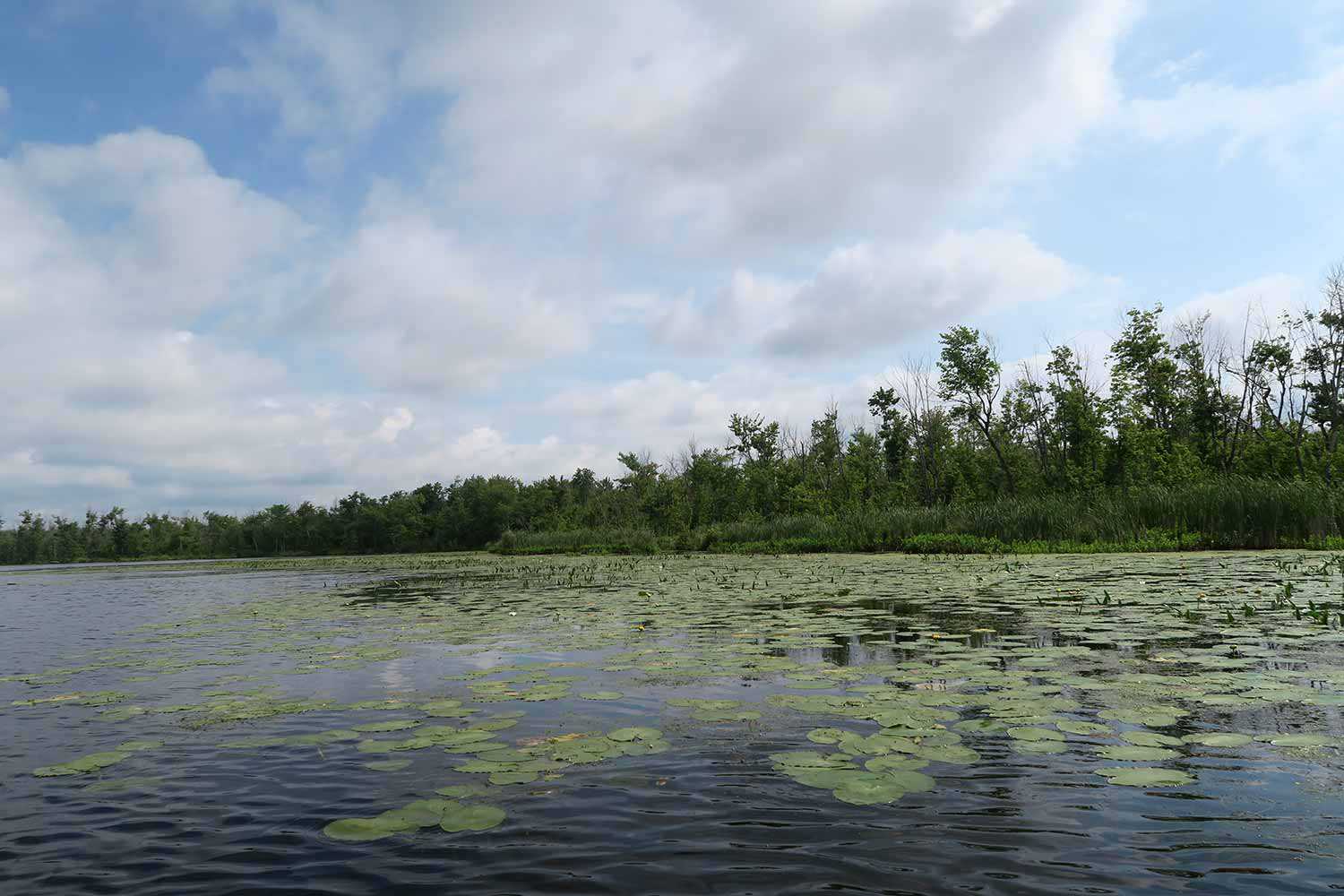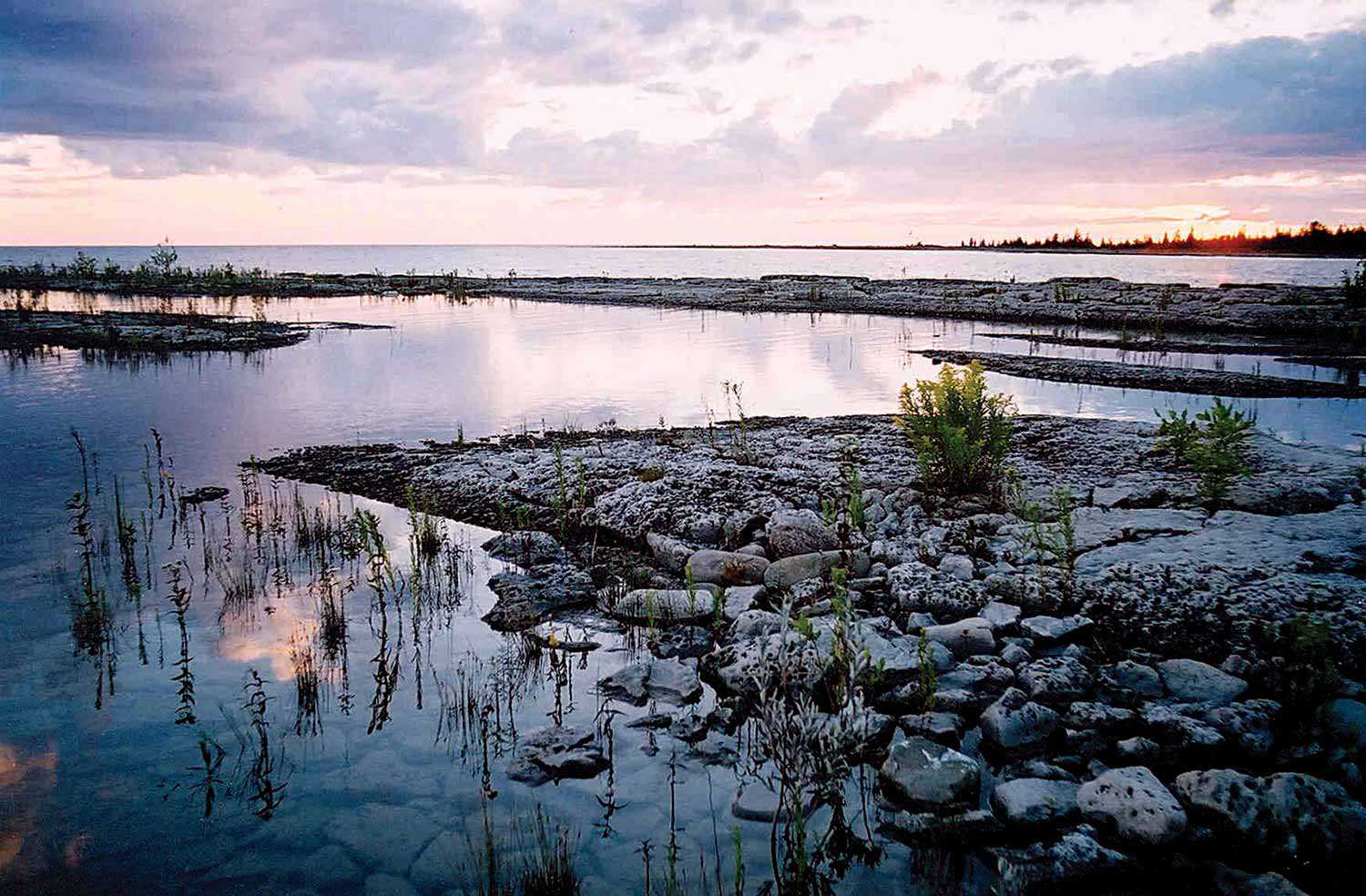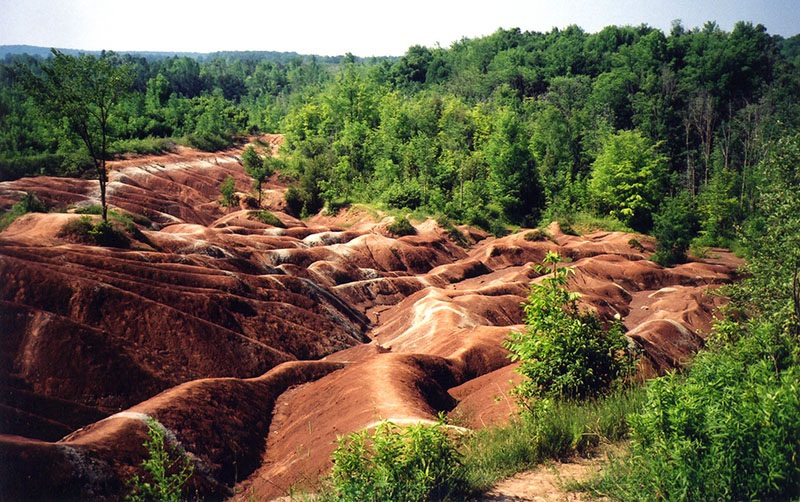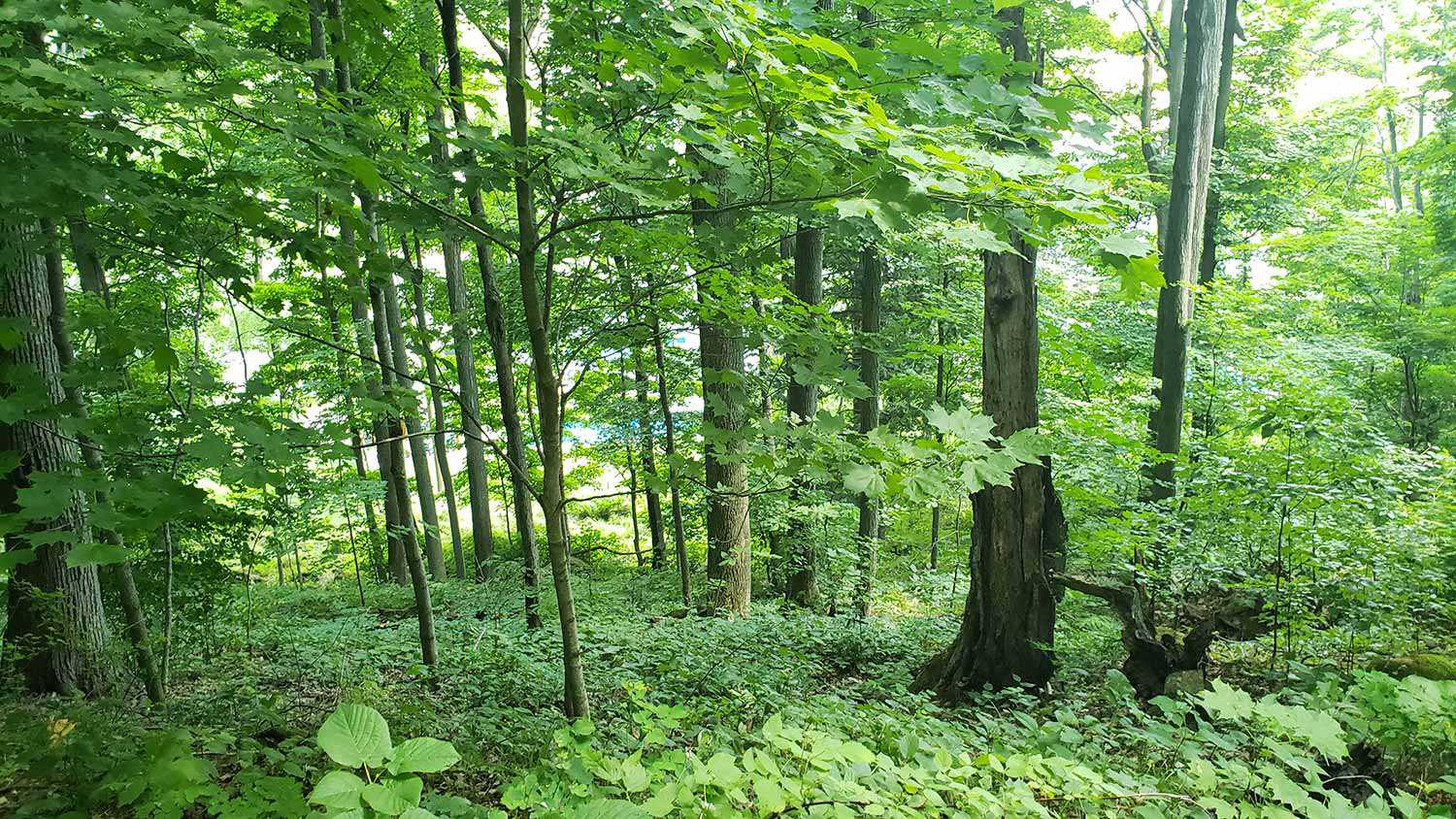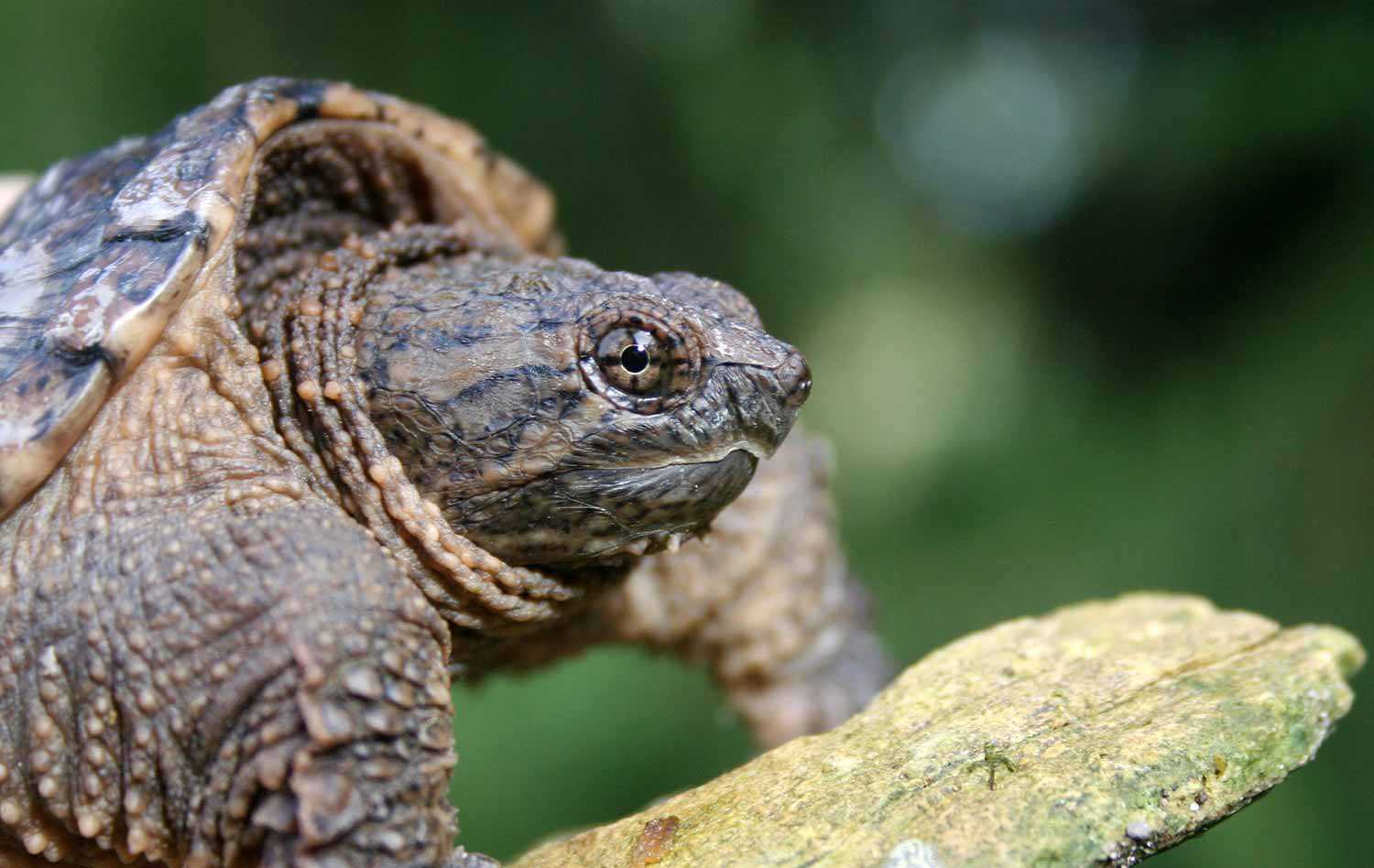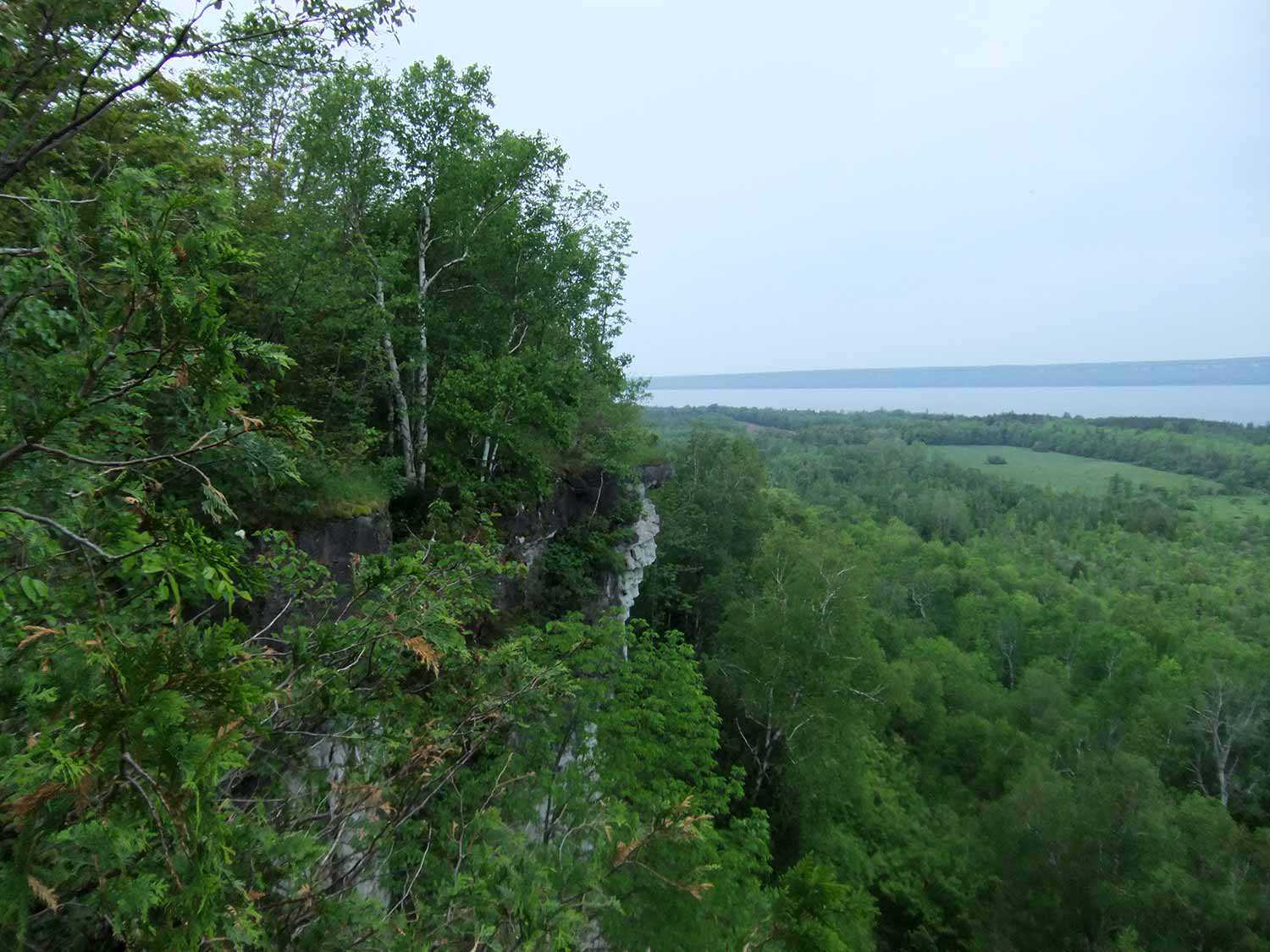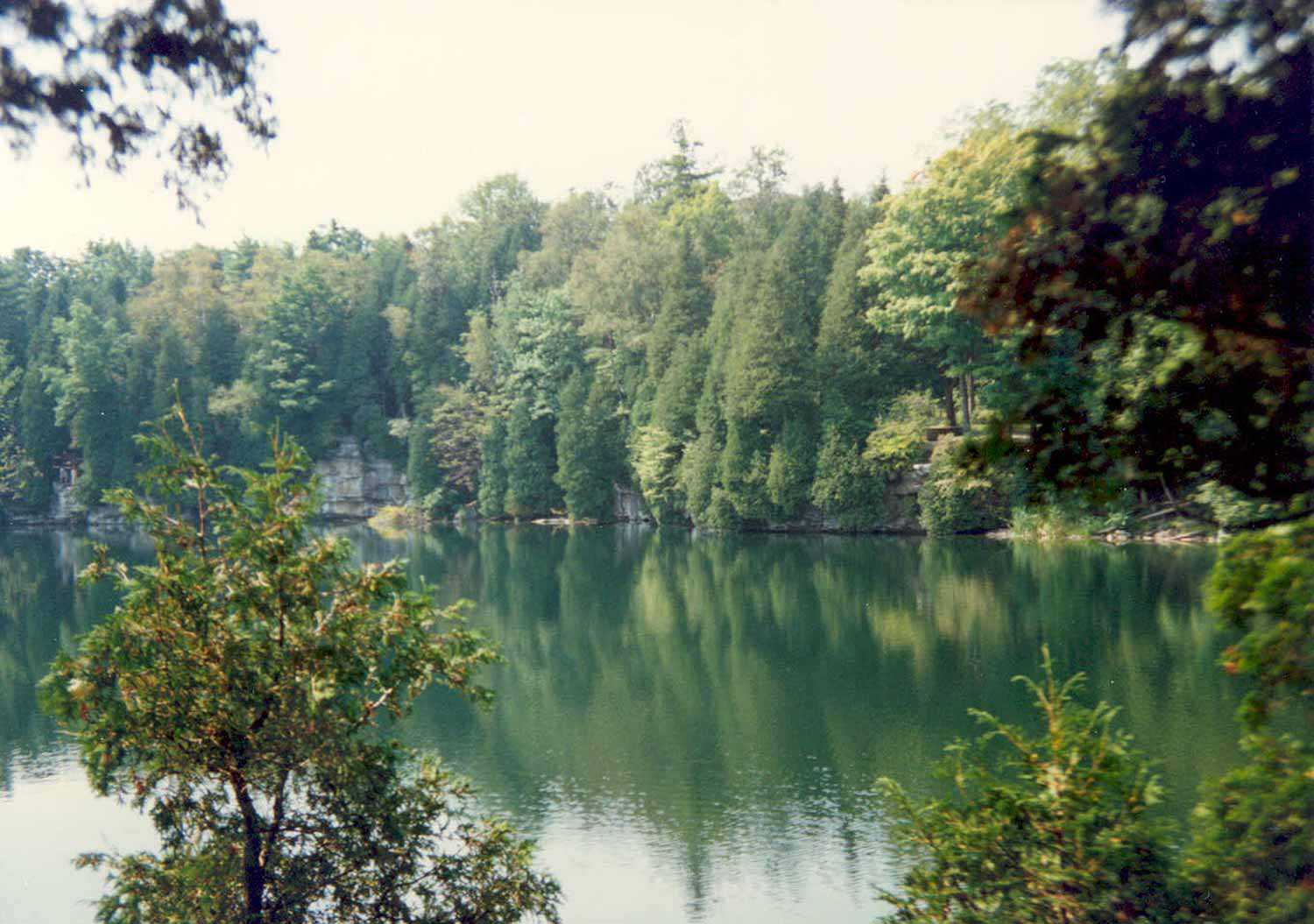Menu
Great Manitou Island Property
Great Manitou Island – owned by the Ontario Heritage Trust – is the largest island in the Manitou Islands Provincial Nature Reserve. This nature reserve is composed of four islands that form a 2.25-km (1-mile) circle in Lake Nipissing, 10 km (6 miles) southwest of North Bay. The reserve was established to ensure the long-term protection of the outstanding colonial nesting habitat for great blue heron and osprey, as well as a variety of plant communities and a unique geological and archaeological history. The entire reserve is designated as a non-operational provincial park, which means that there are no facilities or services on the islands.
Public access
Great Manitou Island has a beach that can be accessed by boat. There is no formal trail network and there are no facilities on the island, so camping is not permitted. Poison ivy is common throughout the property and care should be taken to avoid it.
Map
Great Manitou Island is 84 hectares (210 acres) in total. It includes a small beach area and is suitable for day use only (no camping is allowed) and water-based recreation like swimming, boating or walking along the beach. Great Manitou Island was purchased in 1979 by the Nature Conservancy of Canada with funds donated by Hilda Pangman in remembrance of Peter Pangman, a founder of the North West Company. The Ontario Heritage Trust acquired the property in 1981.
Ontario Parks manages the Manitou Islands, including Great Manitou Island, on behalf of the Ontario Heritage Trust. The long-term protection of this nature reserve was originally facilitated by the Nature Conservancy of Canada and local naturalist clubs. The heron and osprey populations are monitored to determine their optimum nesting ecology and population dynamics.
Heritage value
This island is home to 50 species of breeding birds, including a great blue heron colony and osprey nesting sites. The island is forested with tree species such as basswood, black ash, white birch, white cedar, bur oak and silver maple. Thickets of poison ivy, striped maple, chokecherry and ground hemlock are common.
The unique geological history of the Manitou Islands complex dates back to the lower Cambrian period 2.5 billion years ago when the majority of Lake Nipissing bedrock was formed. The limestone bedrock that composes the island is around 565 million years old. Glaciation was active in the area between 45,000 and 9,000 years ago, scouring and reshaping the surface of Great Manitou Island.
Archaeological investigations in 1984 identified two sites – a small Middle Woodland Eastern Laurel site (c. 200 BC to 400 AD) and a Middle Woodland site (c. AD 600 to 800). Both sites contribute to our knowledge of Ontario’s cultural history. There are also historical records that indicate that the North West Company may have used the island as a refuge on its trade routes.
Photo gallery
-
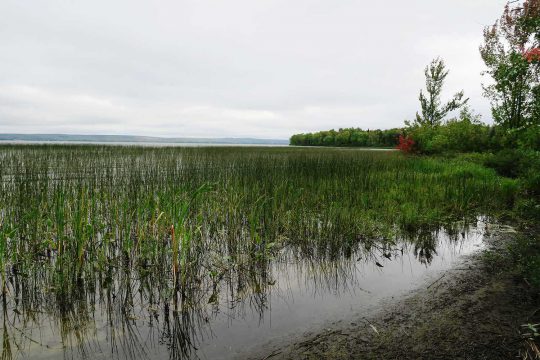
Marsh area at the Great Manitou Island Property -
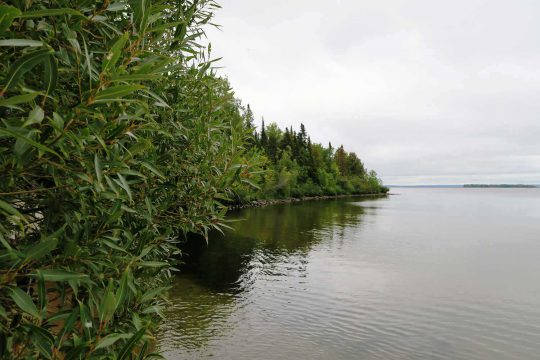
Shoreline at the Great Manitou Island Property -
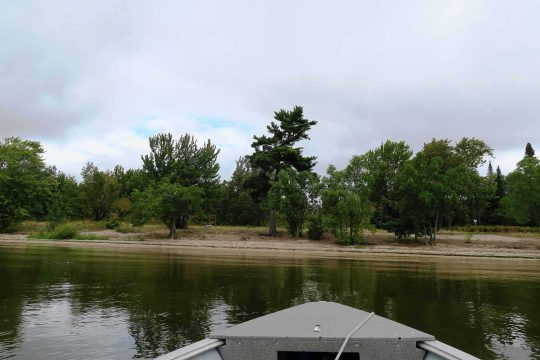
Approaching the main beach area of the Great Manitou Island Property -
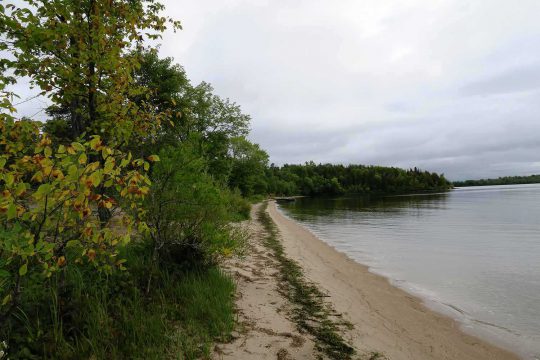
The beach of the Great Manitou Island Property, looking east -

Boneset at the Great Manitou Island Property -

Bracken fern sori at the Great Manitou Island Property -

Canada yew with berries, found at the Great Manitou Island Property -
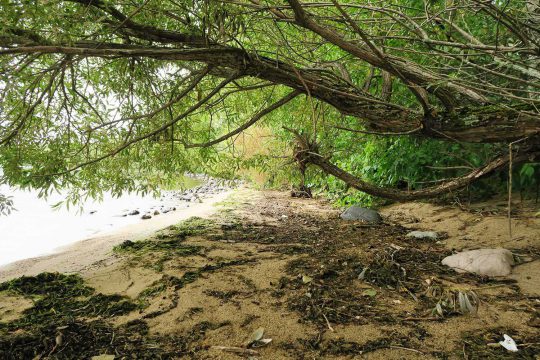
A willow tree on the beach of the Great Manitou Island Property



